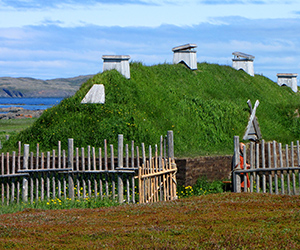CANADA HISTORY
Prairie Drought

During World War I, the demands for food and supplies from Canadian farms reached unprecedented levels. To meet the urgent needs of the war effort, particularly wheat, vast stretches of prairie land were brought under cultivation. Much of this newly ploughed land was located in the Palliser Triangle, an expansive area encompassing parts of Alberta, Saskatchewan, and Manitoba. This region, named after the British explorer John Palliser, who in the mid-19th century described it as largely arid and unsuitable for agriculture, experienced a transformation during the war as it was converted into fertile farmland.
In the rush to increase agricultural output, little attention was paid to the long-term sustainability of the land. Thousands of acres of marginal, previously uncultivated land were brought into production. For several years, these efforts seemed successful, and the land produced substantial yields of wheat, helping to feed Allied troops overseas. However, after the war, the demand for agricultural products slowed. With falling prices for wheat and a global economic downturn looming, much of the new farmland was returned to grazing use for cattle. This shift, combined with overfarming during the war, left the soil vulnerable and exhausted.
The return of cattle and horses to the overworked land had disastrous consequences. The soil, already depleted of nutrients and moisture from extensive wheat farming, became further degraded under the weight of livestock hooves, which compacted the soil and destroyed its consistency. This once-productive land turned fragile and was left exposed to the elements, particularly wind. The loss of soil integrity set the stage for a series of environmental catastrophes that would reshape the region and devastate the livelihoods of thousands of prairie farmers.
The Palliser Triangle is infamous for its cyclic nature, alternating between periods of relative productivity and long spells of drought. While some settlers were drawn to the area by reports of rich, fertile soil ideal for farming, these assessments overlooked the region's inherent instability. Periods of agricultural success, during which settlers flourished, were frequently followed by harsh droughts, as noted in Palliser's original assessment of the region as semi-arid and of limited agricultural value.
The first warning sign of the environmental and agricultural collapse to come appeared in 1920, when the region was hit by a limited drought. Although not widespread, the drought forced some farmers to abandon their lands. However, nothing could prepare the prairies for the drought that began in 1929 and persisted for nearly a decade. From 1929 to 1937, rainfall in the Palliser Triangle was far below average, plunging the region into a period of extreme drought that compounded the difficulties of the Great Depression.
As the drought dragged on, the exposed and exhausted soil began to dry up and disintegrate into fine particles, which were easily carried away by the wind. The lack of rain and relentless windstorms turned the region into what became known as the Dust Bowl, a stark symbol of environmental disaster. The dust storms that plagued the prairies were unlike anything seen before. The dry soil was lifted into the air by powerful winds, forming towering clouds of dust that swept across the plains, enveloping everything in their path.
These storms were not mere inconveniences—they were relentless and destructive forces. Dust clogged machinery, buried roads, drifted over fields, and invaded homes. Entire towns were coated in a thick layer of dust that permeated every corner of daily life. The dust penetrated homes, settling on furniture and food, making it impossible to keep anything clean. It got into people's eyes, lungs, and clothes, turning the once-lush prairies into an inhospitable wasteland.
As if the dust storms weren’t enough, another plague soon followed. The dry conditions provided ideal breeding grounds for grasshoppers, which began to appear in massive swarms across the prairies. The grasshopper swarms devoured everything in their path—crops, grass, tree bark, and even the linen hanging on clotheslines. For farmers who had struggled to save what little remained of their crops after the drought and dust storms, the arrival of grasshoppers was the final blow. The voracious insects stripped the land bare, leaving farmers with nothing to harvest.
The combined forces of the drought, dust storms, and grasshopper infestations led to the abandonment of thousands of farms. By 1936, more than 13,900 farms in southern Saskatchewan and Alberta had been deserted. Families, unable to grow crops or raise livestock, gave up their land to nature and moved elsewhere in search of better opportunities. The once-thriving agricultural communities were left in ruins as homesteads, barns, and fields stood empty and lifeless.
The devastation in the Palliser Triangle highlighted the fragility of prairie agriculture and the broader impacts of unsustainable farming practices. It also underscored the vulnerability of Canada’s agricultural sector to environmental factors such as drought. The crisis prompted the Canadian government to take action. Both the federal and provincial governments implemented a series of land reclamation and relief projects aimed at addressing the underlying causes of the environmental collapse.
Soil conservation efforts were launched to restore and protect the land. Governments financed projects that focused on rejuvenating the soil, including the development of water reservoirs and irrigation systems. These measures helped retain moisture in the soil and mitigated the effects of future droughts. Farmers were also encouraged to adopt more sustainable farming techniques, such as crop rotation and contour plowing, to prevent soil erosion and improve the land’s long-term viability.
Additionally, the crisis sparked a shift in agricultural practices in the prairies. Rather than focusing exclusively on wheat production, farmers began to diversify their operations. More emphasis was placed on mixed farming, which included raising livestock and growing a variety of crops better suited to the harsh prairie conditions. The development of better drought-resistant seeds and advances in irrigation technology also contributed to the region’s recovery.
The Dust Bowl and the hardships it brought to the prairies during the Great Depression are a critical part of Canadian history. This environmental disaster not only exposed the limits of agricultural expansion but also illustrated the interdependence of human activity and the natural environment. The crisis prompted significant changes in farming practices, land use, and governmental policy, all of which helped shape the future of prairie agriculture in Canada.
Moreover, the Dust Bowl experience served as a stark warning about the risks of overexploitation of natural resources. The lessons learned from this period influenced future Canadian agricultural and environmental policies, fostering a greater awareness of the need for sustainable development and the conservation of natural resources.
In conclusion, the ecological and agricultural collapse of the Palliser Triangle during the 1930s had profound implications for Canadian history. It exposed the consequences of unsustainable land use and the fragility of prairie agriculture in the face of environmental challenges. The response to this disaster, including soil conservation efforts and agricultural reforms, helped rebuild the region and laid the groundwork for more sustainable farming practices in the years to come. The Dust Bowl remains a powerful reminder of the importance of environmental stewardship and the enduring impact of the Great Depression on the Canadian prairies.
Cite Article : www.canadahistory.com/sections/documents




